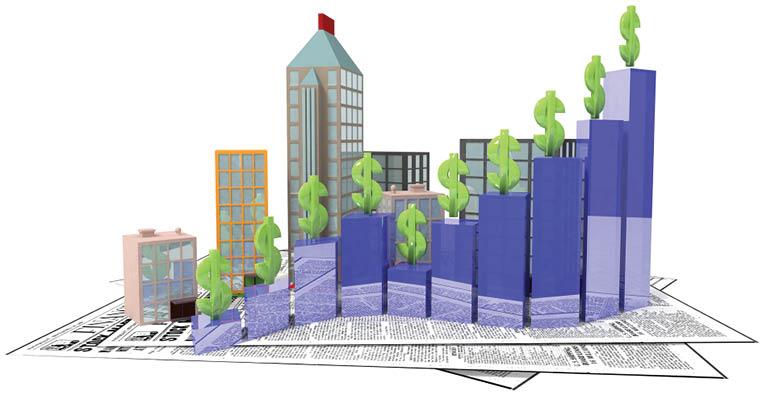A strong fourth quarter lifted commercial mortgage originations by 3 percent in 2018 as multifamily and industrial originations drove investor activity, according to preliminary estimates from the Mortgage Bankers Association’s Quarterly Survey of Commercial/Multifamily Mortgage Bankers Originations.
The MBA released its preliminary figures during at the 2019 Commercial Real Estate Finance/Multifamily Housing Convention & Expo underway this week in San Diego.
Fourth quarter increases over the year-ago quarter were led by the healthcare, multifamily and industrial sectors, with healthcare experiencing a 61 percent year-over-year increase in the dollar volume of loans.
Origination volume on multifamily properties was up by 32 percent over the year-ago quarter and industrial lending was up by 28 percent. In comparison, retail saw origination rise by just 1 percent, office property originations declined by 3 percent and hotel lending was down by 4 percent.
Jamie Woodwell, MBA’s vice president for commercial real estate research, said the year ended strong, despite broader market volatility. “Investor and lender interest in multifamily and industrial properties continues to drive transaction volumes while questions about retail and office property markets have slowed activity for those property types,” he said in a statement.
Matt Brendel, divisional president and managing partner at JPI, which builds apartments, says optimism in the sector remains present.
“We continue to see very strong investor and lender interest in the multifamily sector as demand remains strong; the fourth quarter is traditionally very active for transactions and 2018 was no different,” Brendel says. “The outsized increases as compared to other years was likely influenced by a decrease in the 10-year Treasury rate during the same period.”
JPI is focused its multifamily development on two markets last year: Dallas-Fort Worth and Southern California. It started construction on nine communities with a production cost of about $840 million—$520 million in DFW and $320 million in Southern California.
For the full year, the commercial/multifamily market ended the year with originations up about 3 percent over 2017, according to preliminary figures. Multifamily led with a 22 percent increase over 2018.
Among investor types, the dollar volume of loans originated for Fannie Mae and Freddie
Mac increased by 32 percent year-over-year. There was a 22 percent year-over-year increase for life insurance company loans, a 5 percent increase in commercial bank portfolio loans, and a 35 percent decrease in the dollar volume of CMBS loans.
“I think multifamily will remain very strong this year with Fannie Mae and Freddie Mac providing a lot of liquidity to that asset class,” says Adam Finkel, principal at Phoenix-based commercial mortgage broker Tower Capital, who was attending the MBA conference. Besides the GSEs, life insurance companies, banks, credit unions and equity groups and debt funds are all still placing capital into multifamily, he says.
“I think the new Opportunity Zone legislation will really help breathe some oxygen into the market as well and encourage additional investment,” he adds, noting the legislation could drive affordable rental housing to underserved areas.
Dallas-based Caddis Healthcare Real Estate says it expects senior housing to continue to draw investor interest into 2019. The company this year will break ground on an 18-story senior housing high-rise in the Buckhead area of Atlanta and will also build a senior living community in Heartis Yardley, near Philadelphia. Caddis was also active in 2018 acquiring medical office buildings with Invesco as a partner, said Jud Jacobs, executive vice president of development and a partner at Caddis.
The high rate of healthcare originations in the fourth quarter noted in the MBA survey could be due to investors seeking to close deals before the end of the year, Jacobs says. He said 2019 also looks positive for the healthcare sector.
“The capital markets look strong; there’s a high level of interest for equity investment and from lenders,” he says.
Industrial still hot
The MBA’s numbers show the industrial sector origination volume up for the fourth quarter and the full year, and investor interest should remain high into 2019, says Tony Crème, senior vice president at Hillwood, an industrial, commercial and residential developer active in 25 states.
Hillwood just announced plans for to build three new speculative industrial buildings totaling nearly 1.5 million sq. ft. at AllianceTexas, its massive 62,000-acre development in Dallas-Fort Worth.
One of the spec warehouses will offer over 1 million sq. ft. with the ability to expand to over 2 million sq. ft.– which would make it the largest class-A industrial buildings under one roof in the nation. The three buildings will break ground in March with a scheduled completion in the fourth quarter.
E-commerce should continue to drive investor interest in the sector, especially among institutional investors, Crème says. “They are easy and inexpensive to re-tenant and with the growth of e-commerce creating a huge demand for industrial space, you are seeing it become the preferred asset class,” he says.
Capital widely available
Capital for many sectors will be abundant this year, according to many real estate experts.
MBA projects commercial and multifamily mortgage originations to total $530 billion in 2019, which is just a hair higher than 2018's volume of $526 billion and matches the record $530 billion in 2017.
“Our banking relationships continue to be very interested in originating new construction loans,” says JPI’s Brendel, “and there is strong interest from private and institutional capital for equity in new multifamily developments.”





